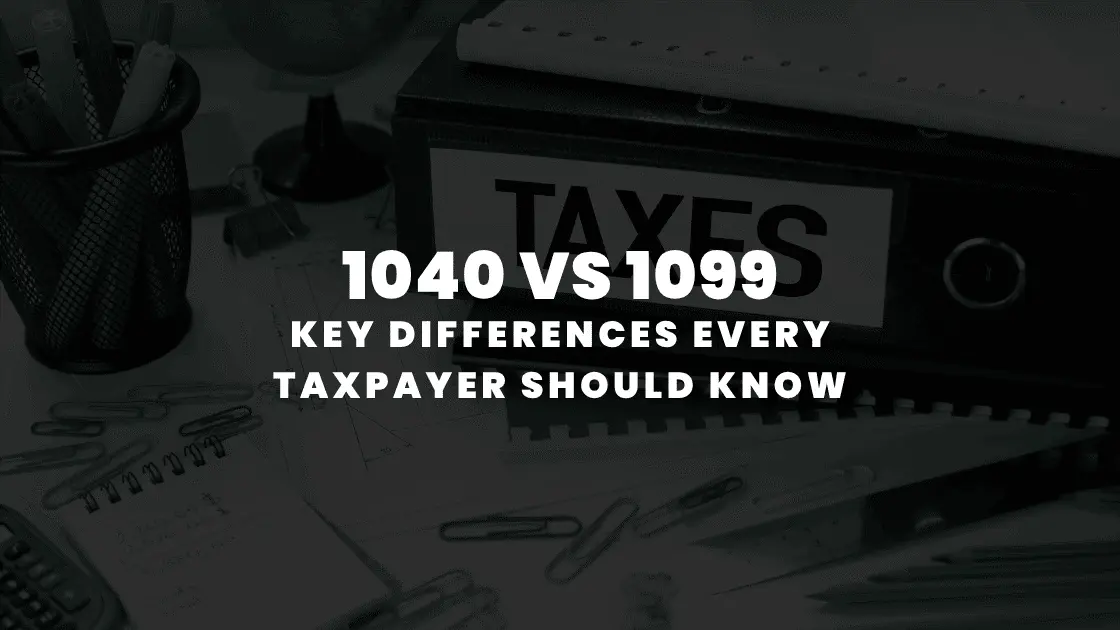June 20 2024 | By Farwah Jafri | 9 minutes Read

What is Form 8995?
How Do I Claim the 8995 Form Tax Deduction?
What is the Purpose and Importance of the Form?
Who is Eligible for the 8995 Form?
Who Can Use the 8995 Form?
According to Business Structure
According to the Income Type
Types of Income Excluded
Understanding Form 8995-A
Lines 1-4
Lines 6-10
Lines 11-15
Lines 16-17
FAQs
What is Form 8995 used for?
How does Form 8995 differ from Form 8995-A?
Who qualifies to use Form 8995?
What types of income are excluded from the QBI deduction?
Can I still claim the QBI deduction if my income exceeds the threshold?
Why might I need professional help with Form 8995-A?
Final Thoughts
For business owners looking to maximize their financial efficiency and business gains, their understanding of the tax system and its particulars is vital. One element that tends to stand. Out for business owners is the Qualified Business Income (QBI) deduction which can reduce taxable income by a huge margin. This deduction can be availed through the 8995 form. But what is Form 8995, and how does it fit into the larger picture of the QBI deduction?
In this guide, we attempt to unpack what Form 8995 is, who are the primary users, and provide you with a holistic understanding of its much advanced counterpart, the Form 8995-A.
Form 8995 is also known as the Qualified Business Income Deduction Simplified Computation. It is a form provided by the IRS that allows specific types of business owners to claim a deduction for qualified business income (QBI).
This deduction has been previously established under the Tax Cuts and Jobs Act of 2017. It originated right after the 14% corporate tax reduction was announced as part of the Act. However, this had only been beneficial for around 5% of smaller businesses which had been listed as C-corporations. Other smaller entities did not really receive any benefits.
To assist sole proprietorships, LLC, and many other types, legislators attempted to develop QBID. This led to the following development;
If you are a sole proprietor who owns a pass-through business that has accumulated $200,000 in qualified business income during 2022, and the QBI deduction applies to you, it reduces your taxable income by 20%, which makes the final taxable business income for that year equivalent to $160,000.
If you are self-employed or the owner of a small business and you filed Form 1040 (Individual Income Tax Return) you are eligible for the QBI deduction. To calculate this, you are required to fill either Form 8995 or 8995-A.
The QBI deduction can allow eligible businesses to enjoy a deduction of up to 20% of their qualified business income. This allows them to save on taxes and makes it quite attractive for business owners.
Form 8995 is a great assistance for those whose taxable income falls below a certain threshold. It ensures they take full advantage of the deduction without getting caught up in the complicated computations. For others with a higher level of income, Form 8995-A is also provided.
To use Form 8995, business owners must meet specific criteria. Primarily, their taxable income should fall below the threshold set by the IRS for the tax year. For example, in 2023, the threshold is $182,100 for single filers, married filing separately, and household heads owning a pass-through business. It goes up to $364,200 for married couples filing jointly.
According to the IRS, this threshold is expected to increase to $383,900 for married couplies filing jointly, and $191,950 for others. If you meet the QBID requirements relating to the business structure and if your taxable business income is lower than the threshold set by the IRS for your filing status, you may qualify for a full tax deduction.
In case your income rises above the set threshold, you may still be eligible. However, you might have to study the additional criteria set by the IRS to determine whether you qualify for a partial deduction.
There are certain cases in which you might not qualify or may be subject to phase outs. These include;
However, in case your income exceeds the threshold but you are not a part of the specified trades, you may be able to receive the tax deduction through Form 8995-A.

What is Form 8995-A and why is it so useful? Who can make use of the benefits? Not every business owner can use the 8995 Form. Qualified business income deduction from form 8995 is subject to specific qualifications that relate to business structure, income type, and certain income thresholds as discussed above. Here are some criteria that might help;
If your business falls into one of these categories, you may qualify to use Form 8995, provided you meet the other criteria.
The QBI deduction applies to income from qualified businesses, which generally includes income from:
Not all types of income qualify for the QBI deduction. Excluded income includes:
Understanding these exclusions is essential for accurately calculating your QBI and ensuring you are not over-claiming the deduction.
For business owners whose taxable income exceeds the threshold or who have more complex financial situations, Form 8995-A comes into play. This form requires a more detailed computation and considers additional factors and limitations.
Start by filling out Line 1 of Form 8995 with your business’s name and taxpayer ID number. You can list up to five businesses here (let’s call them A, B, C, D, and E), along with each one’s qualified income or loss for the year. On Line 2, you’ll add up the total qualified business income or loss for all the businesses you listed in Line 1 (A, B, C, D, E).
If you have a net business loss from last year, make sure to note that amount in Line 3.
For Line 4, combine the totals from Lines 2 and 3. This will give you the sum of your business income or loss, including any amounts carried forward from previous years.
Then, for Line 5, simply multiply the total from Line 4 by 20% (or 0.20).
Lines 6 to 10 focus on your income from real estate investment trusts (REITs) and publicly traded partnerships (PTPs). First, list your current year’s income from these investments. Add any amounts you need to carry forward from the prior year, then multiply the total by 20%. Enter this 20% amount in the appropriate spot.
These lines are all about the income threshold. If your total taxable business income before the pass-through deduction is less than $170,050 (or $340,100 for joint filers) for 2022, your QBI deduction will be the lesser of 20% of either:
In Lines 11 and 12, enter your taxable business income and net capital gains (these are found on Lines 3a and 7 of your Form 1040).
Now for the calculation: Subtract your net capital gains from your qualified business income and write the result in Line 13. Multiply this result by 20% to get the amount for Line 14. Finally, compare the amounts on Lines 10 and 14 and record the smaller one on Line 15. This is your QBI deduction.
Lines 16 and 17 help you calculate any carryover loss. If you have a negative net qualified business income, known as a qualified business loss, you can’t deduct it this year. However, you can carry it forward to offset income in future profitable years.

The complexity of Form 8995-A arises from the need to account for various adjustments, limitations, and phase-outs. This requires a thorough understanding of tax laws and careful attention to detail. Errors in these calculations can result in incorrect deductions and potential issues with the IRS.
Given the complexities involved, many business owners seek professional assistance when dealing with Form 8995-A. A qualified tax advisor can help ensure accurate calculations, compliance with tax laws, and maximized deductions.
Form 8995 is used to calculate the Qualified Business Income (QBI) deduction for eligible business owners with taxable income below a certain threshold. It simplifies the process of claiming this deduction.
Form 8995 is a simplified form for calculating the QBI deduction for those with taxable income below the threshold. Form 8995-A is for those with more complex financial situations or higher incomes, requiring detailed computations and additional adjustments.
Business owners with taxable income below the IRS threshold can use Form 8995, provided their business structure and income types qualify.
Excluded income includes capital gains and losses, dividends (excluding REIT dividends), interest income (unless business-related), and wages or guaranteed payments to partners.
Yes, but you will need to use Form 8995-A, which accounts for additional limitations and phase-outs based on your income level.
Form 8995-A involves complex calculations and detailed adjustments that can be challenging to navigate. Professional assistance ensures accurate computations and compliance with tax laws.
Understanding the complex QBI deduction and calculation as well as the differing usage of Form 8995 and Form 8995-A can be quite daunting. At Monily, we specialize in providing expert bookkeeping and tax services to help business owners maximize their deductions and ensure compliance. Whether you need assistance with the simplified 8995 form or the more complex Form 8995-A, our team of professionals is here to help.
Contact Monily today to learn how we can help you navigate these complicated forms, optimize your tax strategies, and save money. Let us handle the complexities so you can focus on what you do best—running your business.
Also read:
Subscribe for business tips, tax updates, financial fundamentals and more.
MORE BLOGS

Starting a business is exciting, right? There’s innovation, there’s growth potential, and the thrill of building something from scratch. But amid all the planning, entrepreneurs often […]
Learn More →
Starting a business is quite thrilling, until tax season arrives. For founders, understanding the nitty gritty of startup taxation can make a difference between financial efficiency […]
Learn More →
Tax season can be overwhelming, especially when you’re staring at multiple forms with numbers instead of names. Two of the most common, and often misunderstood, are […]
Learn More →